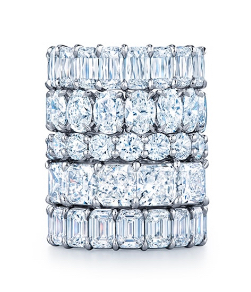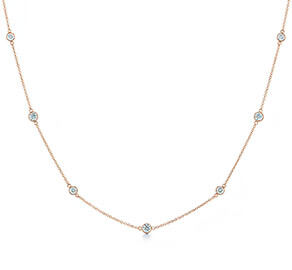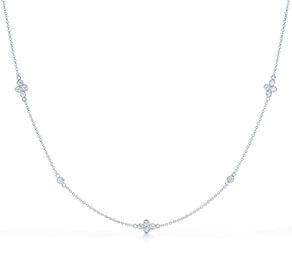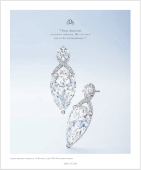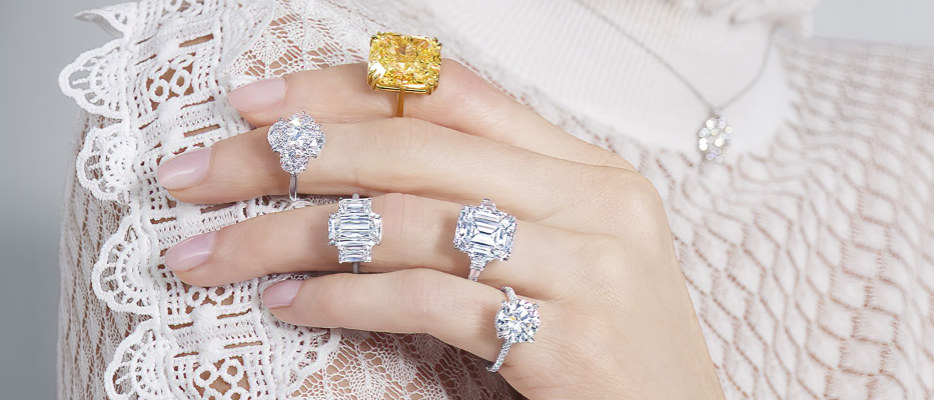A diamond’s beauty, rarity, and value is determined by its color, clarity, carat weight, and cut, known as the 4Cs. The first three elements are determined by nature, but it is the remarkable skills of Kwiat’s master craftspeople that define the diamond’s cut.
Every stone we select must meet the strict standards we’ve set over the past century. Only the finest rough diamond crystals, with a high color and clarity grade, will do. Stones are cut with precision and care to unlock the brilliance within.
The 4Cs – Everything You Need to Know to Buy a Diamond
CARAT WEIGHT COLOR CLARITY CUT FLUORESCENCE POLISH & SYMMETRY
View Transcript
The Kwiat family has over 100 years of experience in diamonds. Through four generations, our family has passed down its legacy of fine craftsmanship in diamond cutting and jewelry creation, and we want to share our expertise with you so that you can make informed decisions.
As you begin your process of purchasing a diamond, it is important to learn about the way that diamond quality is evaluated and graded.
The basic framework for evaluating quality in a diamond is called The 4 Cs. These are: Carat weight, Color, Clarity, and Cut. A diamond’s beauty, rarity and value are determined primarily by these 4 metrics, along with several other important parameters.
Carat refers to the weight of the diamond on a scale, which is generally a measure of its size.
Color describes the relative degree of a yellow tint that is present within the diamond.
Clarity describes the presence of small imperfections within the diamond’s crystal structure.
Cut describes how well the angles, proportions and facets of the diamond come together to create brilliance and beauty.
The grading scales used for each of these metrics were originally developed by the GIA – the Gemological Institute of America – the leading grading, research and educational institution in the world.
While most diamond professionals can independently evaluate the color and clarity of a diamond, the official grades are given by a diamond grading laboratory. At Kwiat, we exclusively work with GIA graded diamonds. All Kwiat diamonds over a half carat are accompanied by a GIA natural diamond grading report.
As you consider your options, we strongly advise that any diamond you consider to purchase is accompanied by a GIA report.
As you go through the process of purchasing a diamond, you will see is that it is all about the tradeoffs – tradeoffs between size, budget, color, and clarity. It’s balancing those tradeoffs to find the perfect diamond for you that is the whole purpose of the process.
Some decisions make sense – like moving up and down in color or clarity. Other decisions should never be made – like trading down on the quality of the cut.
At Kwiat, every diamond we work with must meet our strict standards for excellence, which we’ve developed over more than a century. We work with the finest rough diamond crystals, with high color and clarity grades, and we cut them with precision and care to unlock the maximum brilliance from within. All of our diamonds are beautifully cut, so when you make choices amongst the tradeoffs, you can trust that any diamond you select will be a wonderful choice.
In this segment, we are going talk about Carat weight. Of the 4Cs, carat weight is the easiest to understand because it is simply the weight of the diamond on a scale.
Diamonds are measured in carats. Carats equal 1/5 of a gram.
The larger the carat weight of a diamond, the larger it will look. For example, a 1 carat diamond is larger than a ½ carat diamond, and a 2 carat diamond is larger than a 1 carat diamond. All else equal, the larger the carat weight of the diamond, the higher the diamond’s value and the more rare it is.
It’s also important to understand that carat weight is not exactly the same thing as size appearance of a diamond. Other things will impact how large a diamond looks and whether it shows its weight, for example the shape of that stone and how well it’s cut.
Differences of carat weight in the tenths or hundredths of a carat range are not dramatically important to changing the size appearance of a diamond. And yet, two diamonds that are exactly the same carat weight may have very different size appearances. So, why is that?
Well, one reason is that diamond shapes that are elongated – like ovals, Ashokas, pears and marquise shapes – tend to appear visually larger than shapes that are round or square. Square shapes, for example Asscher cuts, while very beautiful, often look relatively smaller for their carat weight relative to other shapes.
Another critically important reason that diamonds of the same carat weight may look different sizes, is that diamonds that are cut deeper will carry more weight in the underside – or the depth – of the diamond, where it adds to the carat weight but NOT to the visual size appearance. This is one of the reasons that Cut is the most important of the 4Cs. A well-cut diamond will look the proper size for its carat weight and will not have weight in hidden areas.
At Kwiat, any diamond of any carat weight must show its size properly. The weight must be in the right place. And because of the fine quality of our cut, all of our diamonds will appear bigger and brighter than anyone else’s. Remember that a diamond of a higher carat weight is only worth paying for if it adds to the beauty and visual size appearance of the diamond itself.
In this segment, we are going talk about Diamond Color. In diamonds, when we talk about Color, we’re talking about the grading scale that looks at the color or absence of color within the crystal structure of the diamond. Even though diamonds appear clear to our eye, they do contain slight tints of color, most often yellow, sometimes brown.
Diamond color is graded on a scale originally developed by the GIA and used across the entire diamond industry worldwide. The scale begins at the letter D, which represents the absence of any color and is the very best color grade a diamond can receive. The scale continues alphabetically all the way through Z, which represents the most color in the body color of a diamond. All else equal, the higher the color grade of a diamond, the higher its value and the more rare it is.
The Color grading scale is grouped into ranges. DEF is called the Colorless range. GHI and J is called the Near Colorless range. KLM is called Faint Yellow. N through R is Very Light Yellow and S through Z is Light Yellow.
If you’ve ever seen a diamond that is a brighter or more attractively yellow in color, that is actually graded on a different scale that is beyond the letter Z.
Differences between one color grade and the next are very subtle and not obvious to the untrained eye. Especially when diamonds are placed in jewelry, the color becomes that much harder to discern.
Diamonds are graded looking through their side as they are face down against a white backdrop under very specific lighting conditions. When diamonds are set in jewelry, they are set face up which can mask some of the internal body color that might be present.
Some people are very sensitive to color and others don’t see differences at all. Often casual observers will describe a higher color diamond as seeming brighter or whiter. While not technically correct, this is an accurate understanding of what a higher color diamond can look like to the eye.
Certain shapes can show color more readily. For example, shapes such as radiant, oval, and cushion may show some yellow tint at higher grades than shapes like round, emerald cut and antique style cuts.
Selecting the right color for your diamond is a balance between the color, the clarity, the target diamond size and the target budget. In general, you want to select a diamond that appears white when mounted and generally doesn’t show a lot of color. But that doesn’t necessarily mean that you have to go to the highest color grade to select a diamond that is very beautiful.
At Kwiat, all of our diamonds are colorless or near colorless, and because of the high quality of our cut, our diamonds will appear whiter than their GIA grade.
In this segment, we are going talk about Diamond Clarity. In diamonds, clarity refers to the presence of naturally occurring clarity characteristics within the crystal structure of the diamond, sometimes called inclusions or imperfections. Nearly all of the world’s diamonds have some kind of inclusion or imperfection – that in and of itself is not a problem.
What the clarity scale is describing is how pronounced or visible that clarity characteristic is under 10 times magnification and how impactful it is on the diamond’s overall beauty. The more difficult any inclusions are to see, the higher its clarity grade and the more obvious the inclusions are, the lower the clarity grade.
Diamond clarity is graded on a scale originally developed by the GIA and used across the entire diamond industry worldwide. All else equal, the higher the clarity grade of a diamond, the more rare it is and the more valuable.
The scale begins with the grade Flawless, which represents the absence of any inclusions at all within or on the surface of a diamond. This is the very best clarity grade a diamond can receive.
The grade of Internally Flawless is very similar describing diamonds that have no internal inclusions but may have some minor details of polish on the surface of the stone. Typically diamonds that are Internally Flawless can be further polished to become Flawless.
The next group is the VVS range – which stands for Very Very Slightly Included. There is a VVS1 grade and a VVS2 grade, where the 1 is the higher, better grade. Typically, in VVS diamonds, it is extremely difficult to see any inclusions even under 10 times magnification.
Then there is the VS range – which stands for Very Slightly Included. Again, there is a VS1 and VS2 grade, with the 1 representing the higher or better grade. In the VS range, inclusions are typically visible under 10 times magnification, but they are not visible when the diamond is viewed with the unaided or naked eye.
The next section is the SI1 range, which stands for Slightly Included, followed by the SI2 range.
Diamonds in the SI1 grading range will typically have inclusions that are apparent under 10 times magnification. The better SI1 diamonds will still be clean to the naked eye with no visible inclusions. But not all SI1 diamonds are created equal, and many diamonds in the SI1 clarity range will have inclusions that are readily visible even without magnification.
Diamonds in the SI2 grading range will have inclusions that are very apparent under 10 times magnification. The vast majority of SI2 diamonds will not be clean to the naked eye, although the best of the SI2 grading range can still be clean to the naked eye.
Diamonds in the I – or Included – grading range will have inclusions that are readily apparentto the naked eye. In the I range, the imperfections in the diamond often impede the brilliance and beauty of the stone.
There are many types of inclusions, each with a technical name. In general, inclusions could be spots in the diamond or lines that look like little cracks. These inclusions can be light or dark in color and can be in the center of the diamond or off to the side. All of these factors are considered when a diamond is assigned a clarity grade.
Differences in clarity can be very difficult to see, especially when the diamond is clean to the naked eye or set in a piece of jewelry. Beautifully cut diamonds can mask their inclusions making it even harder to spot differences in clarity grades.
Selecting the right clarity grade for your diamond is a balance between the clarity grade, the color, the diamond size and of course the target budget. In general, you want to select a diamond that appears clean to the eye and does not show obvious or eye-visible flaws. While high clarity diamonds are very rare, it is not necessary to move all the way up the clarity scale to select a beautiful choice.
The sweet spot of the range is often between VS1 and SI1. Diamonds in the VS1-2 clarity range are almost always going to be clean to the naked eye and beautiful clarity choices. The high end of the SI1 grading range can also be clean to the eye and therefore makes a beautiful choice that can balance budget very effectively. And while they are rare, every once and a while an SI2 diamond is clean to the eye and can also be a very attractive choice from a budget perspective.
At Kwiat, our diamonds range from Flawless to SI2 and will appear clean to the naked eye. And because of the superior quality of our cut, our diamonds will mask their internal inclusions making them virtually impossible to see when mounted in a piece of jewelry.
In this segment, we are going talk about Diamond Cut, which is the most important of the 4 Cs. A diamond is beautifully cut is bright and brilliant, no matter the color and clarity. And a diamond that is poorly cut is dull and lifeless, and never worth the money.
Cut is not the same thing as diamond shape. Shape refers to the general outline and cutting style of a diamond – for example round, oval, pear shape, emerald cut.
Cut refers to the angles, proportions and faceting of the diamond, all of the details that work together to determine how well the diamond captures light and reflects that light back to your eye. Of the 4Cs, the cut is the one that is determined by the artistry of the diamond cutter. It takes skill and experience to properly cut a diamond.
The beauty and majesty of diamonds really comes from the unique and extraordinary way that they reflect and disperse light – there’s no other gemstone quite like it. To simplify the concept, let’s take a look at how diamonds reflect light.
When light hits a diamond that is properly cut, that light will bounce around inside the stone and then reflect back to your eye, creating all of that miraculous brilliance, fire and scintillation. But if a diamond is poorly cut, the light does not return to the eye, but instead it leaks out or is absorbed. This could be because the diamond is too deep, too shallow, poorly faceted or any of the many other ways that diamonds can be cut incorrectly.
When it comes to understanding and grading the quality of a diamond’s cut, it is critical to understand that the GIA ONLY assigns a cut grade to Round Brilliant diamonds. All other shapes – which we call fancy shapes – do not receive a cut grade from the GIA.
For Round Brilliant diamonds, the GIA cut grading scale includes the following grades: Excellent, Very Good, Good, Fair and Poor.
With round diamonds, the GIA spent more than a decade researching the impact of cut on light performance. Because of the 360-degree symmetry of the circle and generally accepted parameters for cutting a fine round diamond, they were able to come up with a cut grading system.
When it comes to fancy shapes, there’s too much nuance and detail for each individual shape, and so there has not yet been a way to capture cut quality of other shapes in a single GIA grade.
This does not mean that cut is not important for fancy shape diamonds. In fact, it’s just the opposite. For all shapes, cut is the most important factor determining whether a diamond is beautiful and valuable.
And that is what makes the process of buying a diamond hard. Diamond cut – the one thing I just told you was the most important element of all – is also the one quality parameter that doesn’t have a single objective grade to capture it. If you’ve ever wondered why it’s so important to work with someone of integrity that you trust – this is it. You must have proper guidance through the process to ensure the fine quality of the diamond you select.
For more than a century, the Kwiat family has strongly believed that the quality of diamond cut is the one element that you should never compromise. A beautifully cut diamond is brilliant, lively and special in any color and clarity. And a poorly cut diamond – even if it is D Flawless – is just an ugly rock.
Kwiat has the strictest standards in the world for diamond cut – for our round diamonds and our fancy shapes. We cut, inventory and sell only the most beautifully cut stones.
All of our round diamonds are Excellent cut grade, along with Excellent polish and Excellent symmetry – referred to in the diamond trade as Triple Excellent.
But our standards are even stricter than that. We cut all of our diamonds to a specific subset of the GIA’s Excellent cut grade range where they will appear bigger and brighter. Applying this exacting set of parameters, we call our round diamonds our Kwiat Tiara Cut.
So while all Kwiat diamonds receive the GIA’s Excellent cut grade, not all Excellent cut grades earn the Kwiat Tiara logo.
We have similarly rigorous cut standards for our fancy shape diamonds. Our emerald cuts must be bright and lively. Our ovals must show minimal to no bowtie effect. Our cushions must have a beautiful and classic brilliance while also showing their proper size. With more than 100 years of diamond cutting experience, we make certain that every diamond in every shape is cut to the be the most beautiful that it can be.
In this segment, we are going to talk about Fluorescence in diamonds. Fluorescence is not one of the 4Cs, but it is still a very important characteristic to understand because it can have a significant impact on the beauty and the value of a diamond. So what is it exactly?
Fluorescence is an effect seen in some diamonds when they are exposed to long-wave ultra-violet lights, similar to the black lights you might find in a nightclub or a college dorm room.
Under this light, diamonds with fluorescence will emit a glow – most often a blue color, although other colors are possible as well.
The GIA grades the intensity of a diamond’s fluorescence and that grade appears on the GIA natural diamond grading report.
The scale that the GIA uses is:
None – which means that there is no fluorescence exhibited under UV light
Faint – which means that the fluorescence exhibited is present but minimal
Medium, Strong and Very Strong – all of which indicates a significant presence of fluorescence in increasing intensity
With grades of Medium, Strong and Very Strong, the GIA report will also list the fluorescence color – which again is almost always Blue.
So what’s the big deal about fluorescence and why is it so important that you understand it? Under most typical lighting conditions, a diamond fluorescence up to Medium intensity is not detectable to the naked eye.
However, with diamonds with Strong or Very Strong fluorescence may have an oily or milky appearance even in regular daylight. It may look like the diamond is “dirty” and needs to be wiped clean, but you cannot because this is an internal characteristic. This milky appearance significantly detracts from the beauty of the diamond making it both less desirable and much less valuable.
And value is another critical element impacted by fluorescence. Diamonds with Medium, Strong or Very Strong fluorescence have significantly less value and do not hold value well over time. Over the last 30 years, the trade has increasingly penalized the value of fluorescent stones graded as Medium, Strong and Very Strong, a trend that is very likely to continue into the future.
At Kwiat, all of our GIA graded diamonds will have only None or Faint fluorescence. And when you’re buying a diamond, our strong advice is to consider only diamonds with a fluorescence grade of either None or Faint.
In this segment, we are going to talk about Polish and Symmetry in diamonds.
Diamond polish and symmetry are two quality characteristics that receive a grade on a GIA natural diamond grading report. Polish and Symmetry are final detailing elements of the diamond – known as the finish.
Polish is the overall condition of a diamond’s facet surfaces – or how well the diamond was polished during the cutting process. Symmetry refers to the exactness of the shape and placement of the diamond’s facets.
The GIA uses the same grading scale that it uses for the Cut grade for Round Brilliant diamonds: Excellent, Very Good, Good, Fair and Poor.
As you learn about polish and symmetry, it is important to understand what these two characteristics do – and do not – represent.
Together, polish and symmetry reveal a standard of care taken in the cutting process and therefore continue to be important measures of a diamond’s overall quality.
But the polish and symmetry grades are NOT the same as a cut grade and they do not adequately capture the overall cut quality of a diamond, especially for fancy shape diamonds.
For Round Brilliant shapes, the industry standard for a fine quality diamond is called Triple Excellent. This refers to round diamonds that have an Excellent grade for cut, and also Excellent grades for both polish and symmetry.
All of Kwiat’s round brilliant diamonds are Triple Excellent – and we call these diamonds that are cut to our incredibly strict parameters our Kwiat Tiara Cut.
For Fancy shapes, there is significantly more nuance in the cutting style and details.
While it may be nice to see the Excellent grade for polish or symmetry, it is not critical for a fancy shape diamond to have Excellent Polish and Symmetry in order for it to be beautifully cut. It is most important to trust the guidance of an expert who will understand what makes for fine quality in a fancy shape.
Diamond Cut
Cut is by far the most important character of a diamond. Even at the best color and clarity grades, a poorly cut stone will appear dull and lifeless, while a well-cut stone will sparkle beautifully. Three factors contribute to a diamond’s brilliance: brightness, fire, and scintillation. To achieve these factors, the Gemological Institute of America, the world’s premier diamond grading nonprofit, released formulas with combinations for crafting the most brilliant round diamonds.
Selecting a diamond with a cut grade of anything less than Excellent on the GIA scale is a mistake. To understand the 4Cs and their relation to cut is to understand why you should never settle for less than perfection.
At Kwiat, we understand that cut is the most important “C.” It is why our standards for cutting a diamond are the strictest in the world. All Kwiat round diamonds receive GIA grades of Excellent but not Excellent diamond is good enough to become a Kwiat diamond. Our diamonds fall within a smaller subset of GIA Excellent diamonds to capture the beauty and brilliance of how a diamond should appear. We call this the Kwiat Tiara® Cut.
Diamond Color
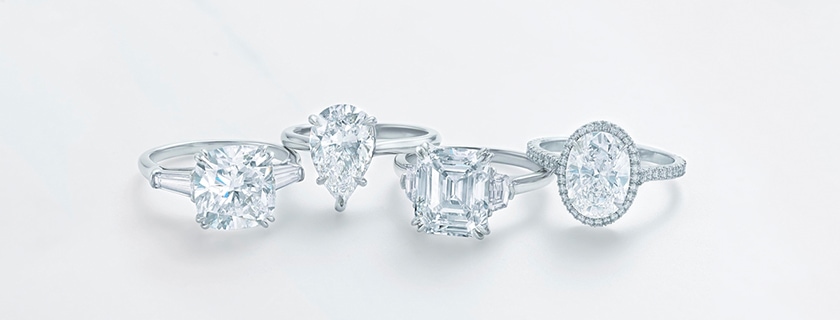
Color refers to the presence of yellow visible within a diamond. As a diamond forms underground, nitrogen molecules enter the carbon structure, giving it a yellowish tint. The more nitrogen within a diamond, the more yellow it will appear.
Color is measured on the GIA color scale beginning at D with Colorless and going through Z, which indicates Light Yellow, a very noticeable color. The difference between one grade and the next on the scale is visually minimal. Select a diamond that is in the Colorless or the Near Colorless range for the best value, keeping in mind that diamond shape and the setting can affect the way the color is seen.
At Kwiat, we adhere to the strictest standards and only select diamonds in the Colorless or Nearly Colorless range. Our round brilliant diamonds are in the D through J color grade range and fancy shape diamonds are in the D through I range.
Diamond Clarity

Clarity refers to the number of inclusions, if any, within a diamond. Almost all diamonds contain some sort of natural inclusion. They occur when there is a disturbance in the process of a diamond’s formation over millions of years.
The GIA clarity scale rates diamonds from Flawless to Included (heavy inclusions). Flawless diamonds are crystal clear inside and out, without any inclusions, and are super rare. At the other end of the range is Included-3, with imperfections that are visible to the naked eye.
Some shapes such as Asscher and emerald cuts, show inclusions rather easily and should have a higher clarity grade. Brilliant cuts such as the round and marquise can have lower grades since they show fewer inclusions.
At Kwiat, our strict standards only allow for diamonds that appear visually clean to the unaided eye. We only select Flawless to Very Slightly Included, with the rare exception of Slightly Included, when the inclusion is not visible to the naked eye. Balance clarity with color and carat to find what works for you.
Diamond Carat
Kwiat Tiara® Cut Diamonds
A diamond’s cut is its most important attribute. Over the years, we have refined our craftsmanship to an art form and created the most beautifully cut round diamond in the world. Every Kwiat Tiara® Cut Diamond appears larger than other diamonds of the same carat weight, while emphasizing maximum brilliance.
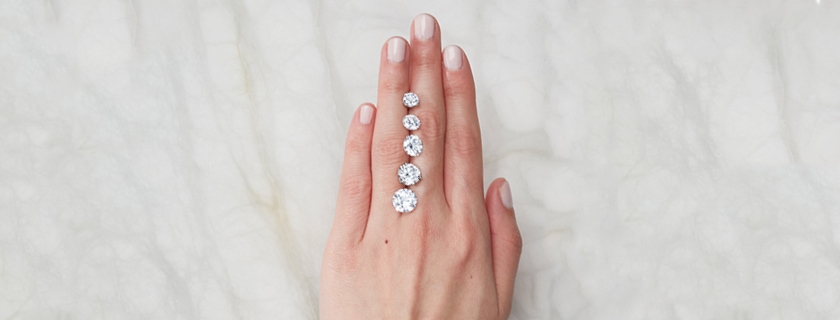
Of the 4Cs of diamonds, carat weight is the most objective and easiest to understand. Quite simply, it refers to the weight of the diamond as measured in carats—the scale used for gemstones. A larger carat diamond may not necessarily look bigger if it receives a poor cut. A larger carat weight is only worth its price if its greater size adds to the beauty and visual size appearance of the stone.
At Kwiat, we cut diamonds for their beauty, not their weight. We assess a stone’s potential and work to find the ideal balance between carat weight and brilliance. Our craftspeople have mastered the art of cutting a diamond to appear bigger than its actual size, maximizing each stone’s beauty.










